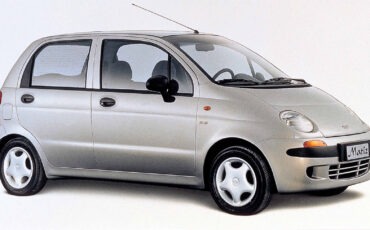In the late 1800s, the Farina family, hailing from Cortanze d’Asti, embarked on a journey that would reshape the automotive landscape in Turin. Their story is one of passion, innovation, and resilience—a narrative that laid the foundation for the renowned Società Anonima Stabilimenti Industriali Giovanni Farina.
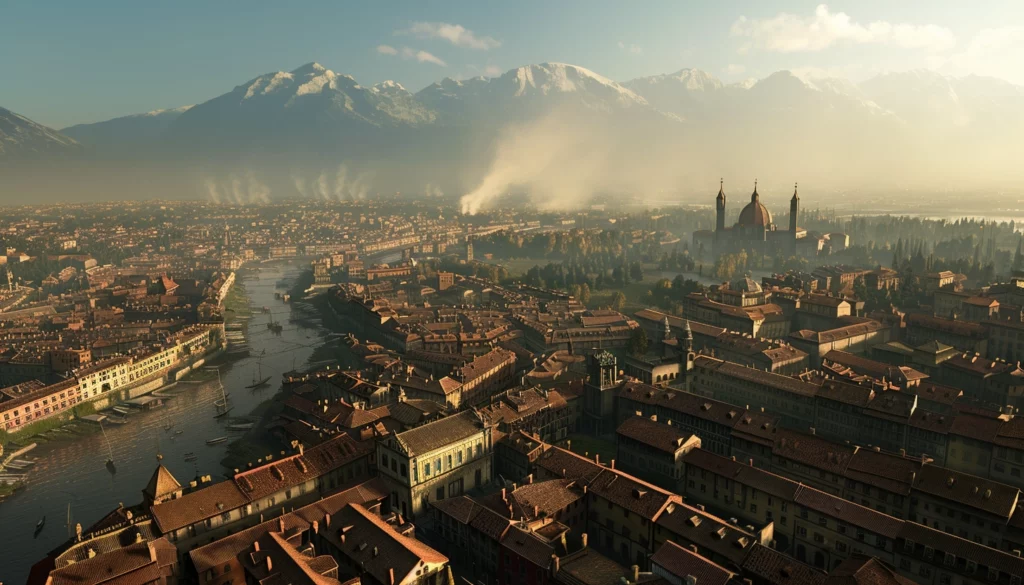
Trained at the prestigious Alessio body shop, the Farina brothers, with also Pinin (Giovanni Battista), decided to forge their own path in the automotive industry. In 1906, amidst a backdrop of economic uncertainties, they established the Giovanni Farina Industrial Plants in Corso Tortona 12 in Turin — a venture that would soon become synonymous with quality craftsmanship.
The initial focus of the Stabilimenti Farina was on the assembly of seats, or “baquets.” However, the turning point came during the economic crisis of 1908-1909, when Fiat sought a dependable partner for the construction of car bodies. Despite Fiat’s inclination to internalize all aspects of car manufacturing, they chose the Farina Plants, recognizing their stellar reputation in the face of economic adversity.
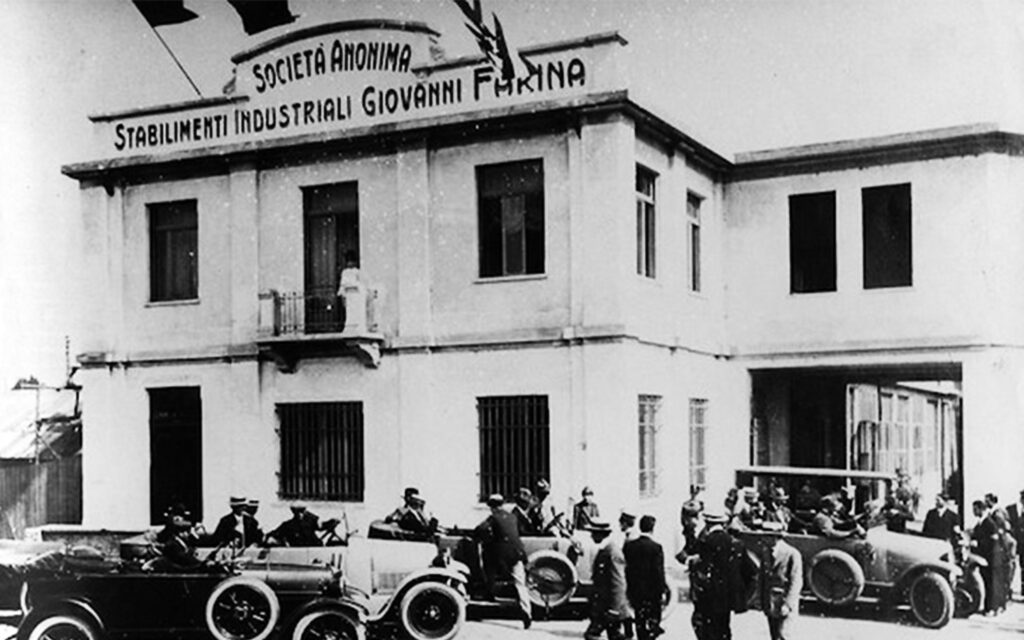
The Farina legacy, born out of resilience, became intertwined with the evolution of Turin’s automotive industry. The craftsmanship exhibited by Stabilimenti Farina went beyond mere production—it became an art form. Their commitment to excellence elevated them to a position of trust, distinguishing them as a reliable supplier in the competitive world of automobile manufacturing.
Simultaneously, Stabilimenti Farina were not only meeting industry demands but also crafting bodies for the elite clientele of Turin. Their dedication to precision and attention to detail garnered admiration, setting them apart from contemporaries struggling in the aftermath of economic upheaval.
As the automotive landscape continued to evolve, the Farina name became synonymous with innovation and reliability. Their journey from apprenticeship at Alessio to establishing an industry giant speaks volumes about the entrepreneurial spirit that defines the Farina family.
The Dawn of Excellence: Farina's Triumph with the Zero
In 1912, having earned the trust of Senator Agnelli, Giovanni’s younger brother, Battista Farina, affectionately known as “Pinin,” designed the front end of Italy’s first mass-produced car: the 12/15 Hp Zero. Senator Agnelli entrusted the construction of the car body to Stabilimenti Farina and even gifted one to Pinin himself. This marked one of the earliest instances of a coachbuilder functioning as a stylist for third parties without engaging in the mass production of the vehicle.
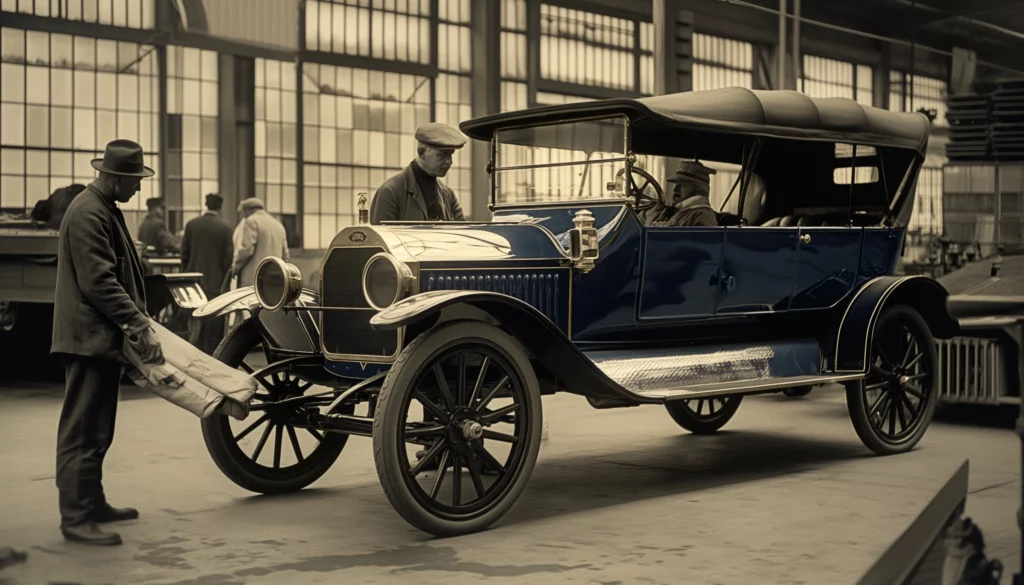
In 1913, Stabilimenti Farina continued their work for private clients, customizing cars to meet individual specifications. Business was booming, and the workshop on Corso Tortona found itself accumulating chassis, with work even extending into Sundays. The following year, in 1914, Stabilimenti Farina began assembling the first ALFA’s, further solidifying their reputation as skilled craftsmen in the automotive industry.
Giovanni Farina emerged as a figure of immense stature, cherished by his employees and actively involved in various social initiatives within the city of Turin. His company swiftly became one of the most significant and esteemed in Italy.
Giovanni Farina’s commitment to excellence and innovation, coupled with the artistic flair brought by Pinin, propelled Società Anonima Stabilimenti Industriali Giovanni Farina to the forefront of the automotive world. Their legacy continued to flourish, shaping not only the trajectory of their company but also leaving an indelible mark on the history of Italian automotive design. As the roaring twenties approached, the Farina family’s influence would play a pivotal role in defining the golden era of Italian automobile craftsmanship.
Forging Innovation: Farina's Journey from War to International Acclaim
During the First World War, in addition to assembling the Fiat 18BL trucks, Stabilimenti Farina also ventured into the aeronautical sector, where they acquired advanced aluminum processing techniques. After the war, they attempted to apply these techniques to automobiles, albeit unsuccessfully due to the still exorbitant costs involved. Meanwhile, Battista Pinin embarked on a study trip to the United States, where he visited Ford to learn about mass production systems.
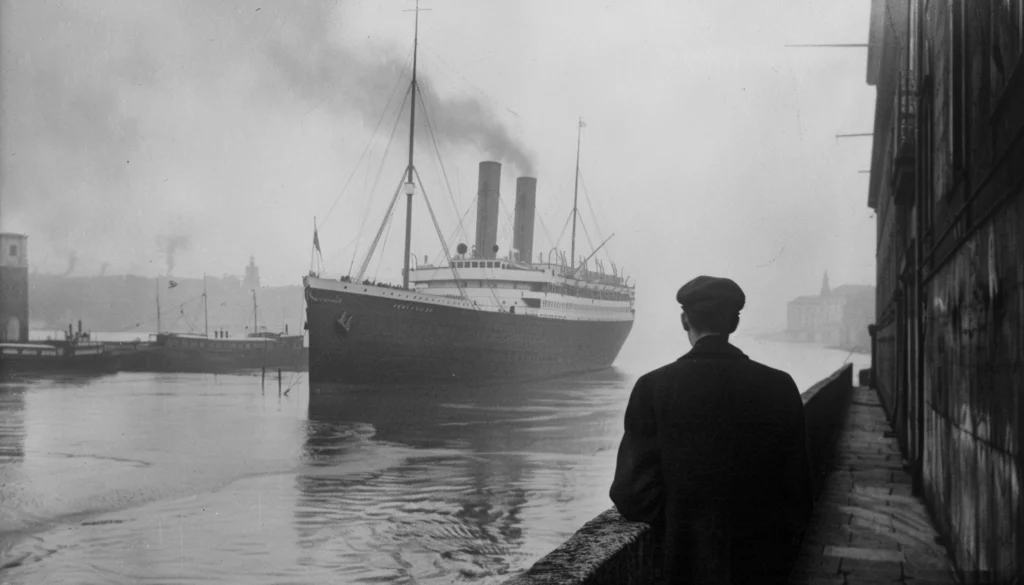
Simultaneously, Giovanni, drawn to innovation, shifted his focus to steel sheet stamping. The installation of a press in his plant between 1920 and 1921 marked a pioneering initiative. This allowed him to organize standardized mass production, such as constructing bodies for the Temperino in several thousand units. Alongside luxury bodywork, this standardized sheet metal production prompted Giovanni Farina to acquire a specialized company, IPLA, to develop it further.
These were also the years when Stabilimenti Farina diverged from Fiat to outfit more Lancia vehicles, a decision driven more by political factors.
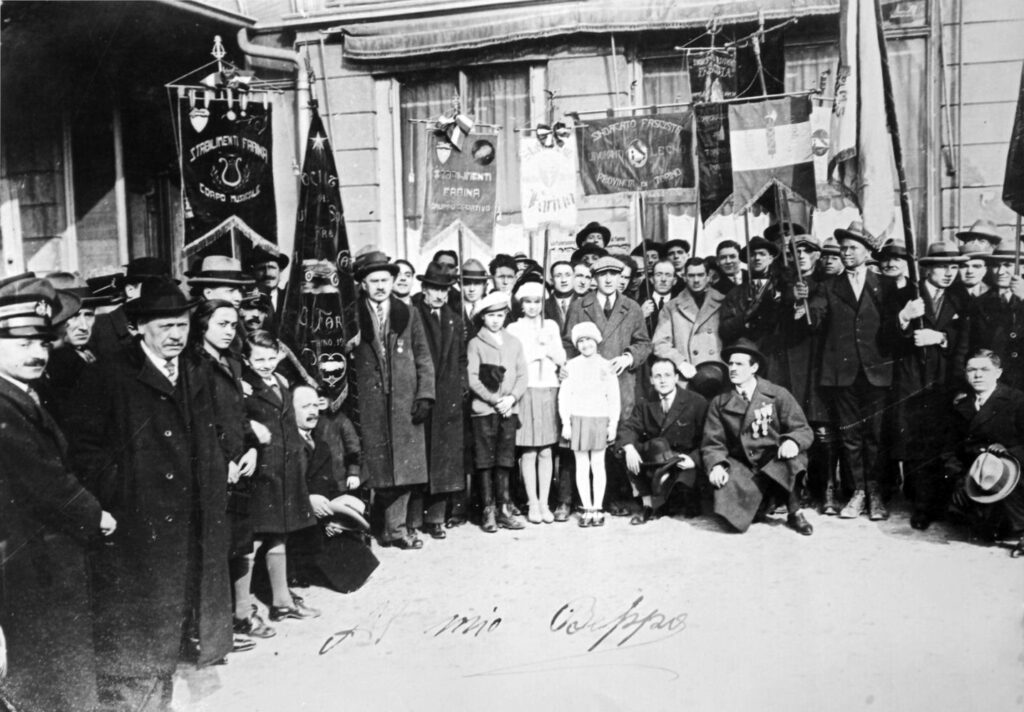
In the 1920s, Stabilimenti Farina emerged as the leading Italian industry in the sector and became one of the most renowned Italian coachbuilders abroad. They showcased their creations at exhibitions in Paris, Berlin, and Geneva, catering to royal families and wealthy industrialists worldwide, including those in Italy. They crafted exquisite bodies for models such as the Lancia Lambda and Dilambda, Itala Tipo 61 and Tipo 65, Mercedes-Benz 630K, Isotta-Fraschini Tipo 8, Fiat 519, 520, 521, and 525, Rolls-Royce 20 Hp, Hispano-Suiza H6, SPA Tipo 25, and Alfa Romeo 6C 1750, solidifying their reputation for craftsmanship and innovation on an international scale.
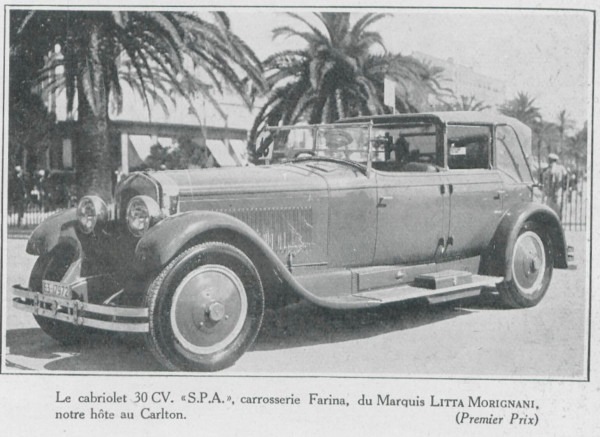
In the interwar years, Farina continued to be a key player in the Italian coachbuilding scene, not only in terms of size but also as a prolific source of talent and ideas. They collaborated with the leading stylists of the time, such as Mario Revelli di Beaumont, making significant contributions to the evolution of automobiles, both aesthetically and technically. Their innovations were showcased at various national and international Concours d’Elegance, where Stabilimenti Farina consistently earned numerous awards. One notable achievement was at the 1927 Monaco Concours d’Elegance, where they secured two first prizes with a SPA 25 Landaulet and a Hispano-Suiza H6 torpedo.
Harmony and Tensions: The Evolution of Farina's Design Legacy in the 1930s
In 1928, Pietro Frua joined the design department, bringing his significant expertise to the team. By 1930, Giovanni’s younger brother, Battista, ventured out on his own founding Pinin Farina. This decision was fueled by ambition, as he sought to apply what he had learned during his journey in the United States. During these years, Stabilimenti Farina continued to benefit from the expertise of Mario Revelli di Beaumont, with whom they clinched victory at the second Concorso d’Eleganza del Lago di Como, precisely at Villa d’Este, showcasing a Lancia Dilambda Cabriolet.
In addition to crafting bodies, Stabilimenti Farina pioneered innovative systems, such as the hydraulically operated convertible roof presented at the 1933 Paris Motor Show on a Lancia Astura. They also developed a dual independent hydraulic brake system, showcasing a commitment to advancing both style and engineering in the automotive realm.
The Farina legacy continued to thrive through these years, with each creation serving as a testament to their dedication to excellence and their pivotal role in shaping the automotive industry’s future.
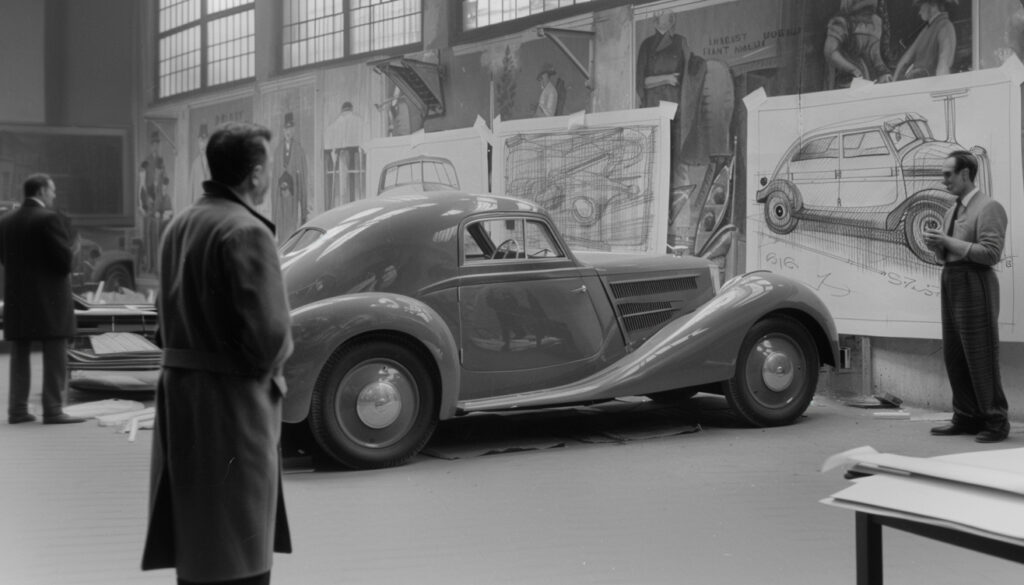
Thanks to the innovative drive led by Mario Revelli di Beaumont, Stabilimenti Farina became key players in the Italian “aerodynamic revolution” alongside Viotti and Touring. Around the mid-1930s, they played a pivotal role in radically transforming the style of cars. Stunning examples, ranging from sporty sedans to cabriolets, adorned the finest chassis of the time, including Alfa Romeo 6C 2500 and 8C 2900, Fiat 1500 and 2800, and Lancia Aprilia, Augusta, and Astura. On February 1, 1936, through the decree-XIV (Decreto Ministeriale), Stabilimenti Farina, is authorized to manufacture not only small and medium-powered internal combustion engines for motorcycle use but also complete motorcycles.
Meanwhile, relations between Pietro Frua and the Farina family weren’t at their best. Giovanni Farina, in his efforts to accommodate all customer requests, frequently clashed with Pietro, who had to alter designs multiple times. Tensions rose, witnessed even by a young Giovanni Michelotti, who joined as an apprentice in 1937. The turning point came in 1939 when Pietro Frua provoked his own dismissal, almost out of spite. He parked his car in front of the entrance gate of the Corso Tortona facilities, blocking the entry and exit of vehicles from the factory courtyard.
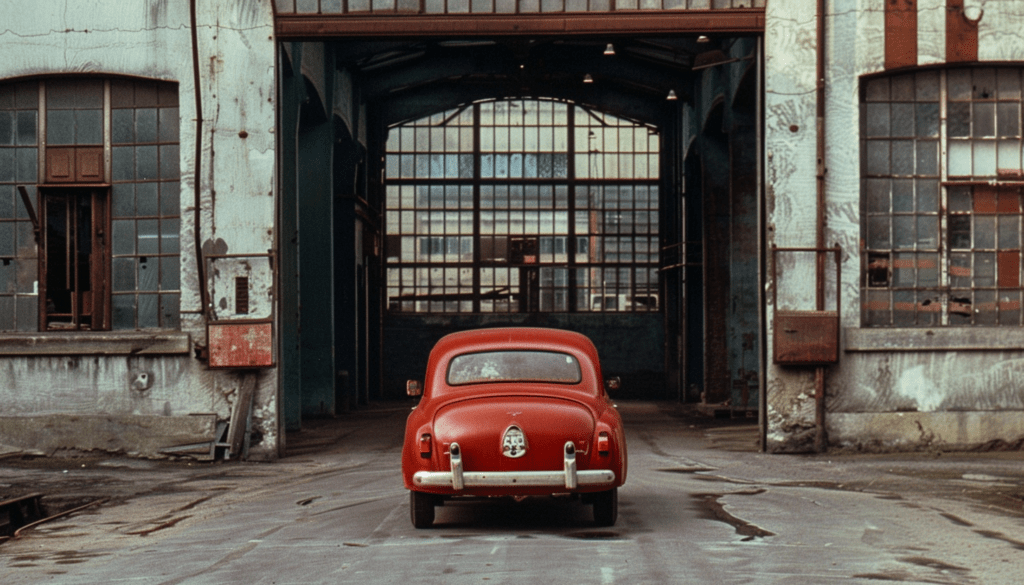
Pietro Frua left Stabilimenti Farina for Officine Viberti before establishing his own firm. This event marked the ascension of Giovanni Michelotti as the head of the design department, also gaining the renowned designer Mario Revelli di Beaumont. The collaboration between Michelotti and Revelli resulted in several projects, with Michelotti handling the aesthetics of the bodywork in some cases, while Revelli focused on the interiors.
In 1939, Stabilimenti Farina introduced variable travel shock absorbers, adjustable directly from the dashboard. Other sophisticated and innovative solutions, including retractable headlights, were realized on various bodies mounted on Fiat, Lancia, and Alfa Romeo chassis. One notable example was a sleek Coupe crafted for Nino Farina, showcasing the ingenuity and creativity fostered by the collaboration between Michelotti and Revelli.
Resilience Amidst Conflict: Farina's Revival and Creative Flourish Post-WWII
During the Second World War, the company was repurposed for wartime production, focusing on mechanical components—particularly braking systems—and even aircraft engines. However, the bombings heavily damaged the Corso Tortona 12 plant. Giovanni Farina, now elderly, decided to step back and leave the management of the bodywork to his sons: Attilio, who handled administration, and Nino, initially tasked with overseeing technical aspects but who ultimately gained fame as a Formula 1 champion.
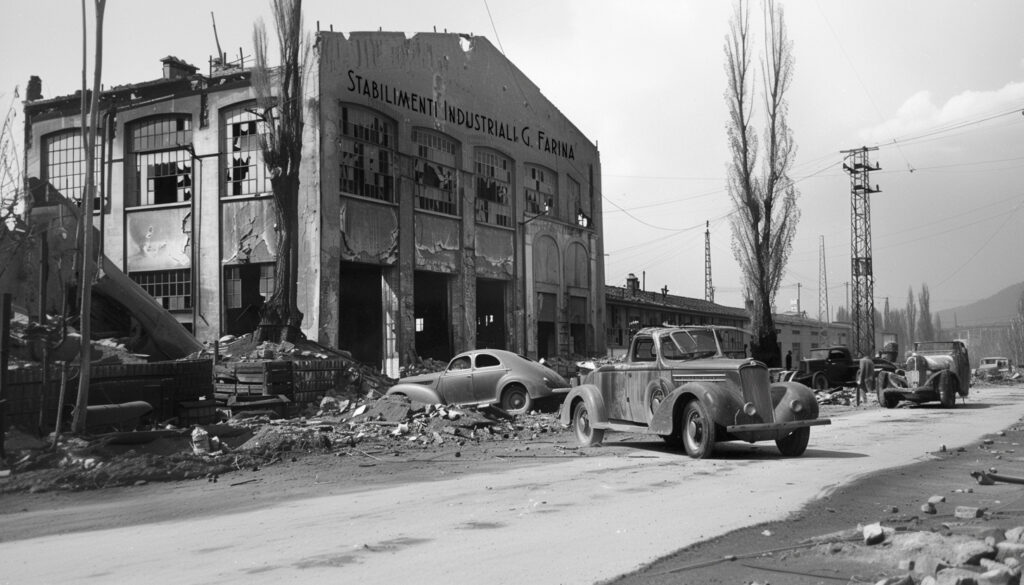
With the help of their employees, including a young Alfredo Vignale, Stabilimenti Farina rebuilt the factory and resumed the production of custom-bodied cars, primarily using the familiar Lancia Aprilia, Fiat 1100, and 1500 chassis. They also crafted numerous unique pieces on various chassis, showcasing remarkable creative vitality, thanks in part to the collaboration with Giovanni Michelotti, who was heading the design department during that period.
Post-War Renaissance: Farina's Diverse Styles and Creative Triumphs
The post-war era was a time of stylistic confusion but also marked by significant experimentation in Italian car bodywork. This was evident in the creations showcased at the first true post-war automobile exhibition in Italy: the Italian Car Bodywork Exhibition in 1947 in Milan. Thanks to Michelotti’s versatility and creativity, Stabilimenti Farina produced series of bodies in various styles, including the flamboyant designs inspired by the French school, the controversial Tank-Style bodies based on Lancia platforms, and the more modern and aerodynamic ones.
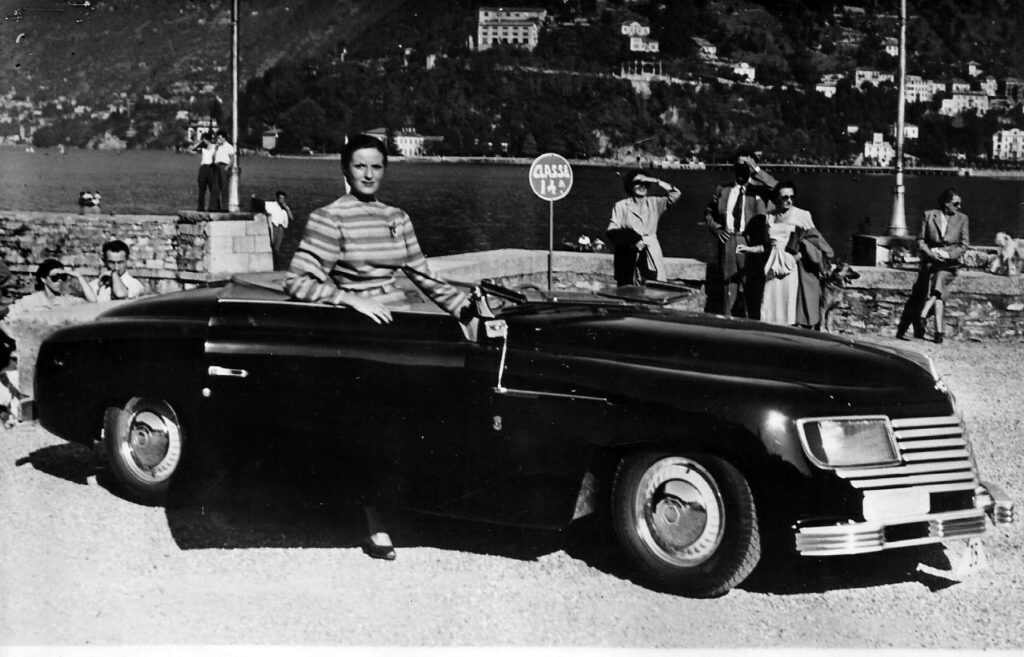
Despite the challenges of the post-war period, Stabilimenti Farina, under the guidance of the Farina family and with the creative brilliance of Giovanni Michelotti, continued to thrive, leaving an indelible mark on the automotive industry with their innovative designs and unwavering commitment to craftsmanship.
End of an Era
In 1947, Stabilimenti Farina faced the departure of their chief designer, Michelotti, who went on to work for Carrozzeria Allemano before eventually establishing his own design studio. The previous year, the company had also lost another key figure, Alfredo Vignale, who started his own coachbuilder workshop but continued collaborating with the Stabilimenti Farina, particularly on the Cisitalia project, contributing to the creation of the 202 CMM aerodynamic models and later, part of the 202 B series.
With Michelotti and Vignale no longer part of the company, the financial situation soon became untenable. Some of the projects during these years included collaborations with Ferrari (several 166 Inter and 212 Inter models) and, notably, Siata. For Ambrosini’s Siata, Farina crafted numerous special bodies based on the Fiat 1400 chassis, ranging from the sporty Daina grand tourers to long-wheelbase limousine versions.
However, this period proved challenging for luxury cars as the economic crisis took its toll. A glimmer of hope came with the contract for the Lancia Aurelia B50 Coupé, a model that found its way into Lancia’s lineup but, unfortunately, due to its high cost, did not achieve commercial success.
During this time, Franco Martinengo took charge of the design department, and although Michelotti’s stylistic influences were still apparent in his creations, the decline of Stabilimenti Farina was not attributed to a design and quality issues.
Stabilimenti Farina continued to produce some bodies for the Cisitalia 303 DF and the Siata 208 CS, including unique specimens based on Jaguar, Fiat 1100 / 1400 and Lancia Aurelia chassis. However, in 1952, they were compelled to suspend operations. Subsequently, in the following year, the company underwent a name change to SAIO (Società per Azioni Industriale Oropa). Many workers, including Franco Martinengo, found employment at Pininfarina. After experiencing the departure of key technicians and a significant portion of their skilled workforce, the ownership failed to adapt production to match the changing market demands. Moreover, the loss of major orders, such as from Ferrari, occurred because their body designs were replicated on different chassis, such as Fiat’s. This downward spiral ultimately resulted in the company declaring bankruptcy and closing its doors in 1953. Today, while the building of Stabilimenti Farina remains, only a fraction of its original structure, notably the facade, stands. It serves as a poignant reminder of a remarkable era in the history of coachbuilding.
Conclusions
The journey of Società Anonima Stabilimenti Industriali Giovanni Farina, from its roots in Cortanze d’Asti to becoming a powerhouse in Italian coachbuilding, is a tale of innovation and influence in the automotive world. Collaborations with design luminaries such as Revelli di Beaumont and Michelotti produced iconic creations. Despite economic challenges, Stabilimenti Farina continued to shape luxury automobile design. The company’s legacy lives on in rare and exquisite cars, serving as a reminder of an era where each vehicle was a unique work of art. The Farina story remains an inspiration, celebrating the enduring spirit of creativity and craftsmanship in Italian automotive excellence.


